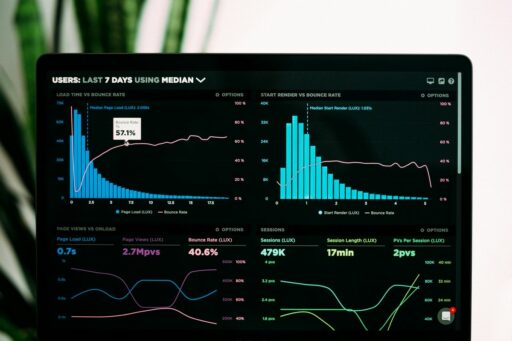Table of Contents
Data lakes have become a cornerstone in the realm of big data management, offering a vast reservoir of possibilities for organizations to store, process, and analyze massive amounts of data. As we delve into the world of data lakes, we’ll explore the architectural nuances, investment landscapes, technological innovations, market dynamics, and future trends that are shaping this burgeoning field. With the right strategies and insights, businesses can navigate through the complexities of data lakes to unlock their full potential and gain a competitive advantage in the digital economy.
Key Takeaways
- Data lakes are pivotal for consolidating diverse data types, with cloud environments playing a crucial role in their expansion and accessibility.
- Investments in data lake infrastructure and analytics platforms present significant opportunities, though they come with inherent risks and challenges.
- Technological advancements, including Data Lakehouse architecture and big data technologies, are instrumental in enhancing data lake efficiency and analytics.
- The big data explosion is a major driver for data lake adoption, with scalability and performance optimization being key to accommodating data growth.
- Future data lake developments are expected to focus on advanced analytics integration and addressing the skills gap to manage increasingly complex data ecosystems.
Navigating the Data Lake Landscape

Understanding Data Lake Architecture
Data lakes have become integral to managing the deluge of data in modern enterprises. Scalability and performance optimization are at the heart of data lake architecture, ensuring that as data volumes swell, the infrastructure can scale without sacrificing speed or agility. This is achieved through meticulous optimization of storage, compute resources, and data processing workflows.
The architecture of a data lake is designed to end data silos, allowing for the consolidation of diverse data types. The layering of data lakes typically involves object storage technologies, which have seen a clear separation from querying and compute engines in recent years. Major players in the industry, such as Snowflake, now offer compatibility with various S3-compatible object storage solutions, enhancing flexibility and integration.
The convergence of data lakes with other data management frameworks is a pivotal development, enabling seamless data integration and governance. This integration supports real-time data ingestion and streaming analytics, bolstering the agility of businesses in responding to market dynamics.
As the data landscape evolves, so too must the architectures that support it. The emergence of the Data Lakehouse architecture is a testament to this, promising to address common pitfalls in technology transitions while offering enhanced capabilities.
The Role of Cloud Environments in Data Lake Expansion
The expansion of data lakes is intricately tied to the evolution of cloud computing. Cloud-based Data Lakes are pivotal in achieving scalability, agility, and cost-effectiveness, addressing the needs of modern data infrastructure. The transition from traditional on-premises solutions to cloud environments has not only ended data silos but also unleashed the value of data by facilitating consolidation, storage, and analysis of diverse data sets.
- Scalability: Cloud environments allow for easy scaling to handle increasing data volumes.
- Agility: Rapid provisioning and dynamic resource allocation speed up data processing.
- Cost-Effectiveness: Pay-as-you-go models reduce upfront investments and operational costs.
Dynamic delivery and extensibility in cloud environments enhance the value of data lakes by connecting them to a plethora of cloud-based services. This interoperability is maximized when data is entitled and provisioned seamlessly, eliminating manual bottlenecks.
The adoption of cloud-based data lakes is not just a trend but a strategic move for many organizations. It reflects a growing emphasis on data governance, security, and privacy, which are becoming increasingly important in the face of regulatory scrutiny. To maintain performance and meet business requirements, optimizing storage, compute resources, and data workflows is crucial.
Overcoming the Data Swamp Phenomenon
Transforming a data swamp into a structured and efficient data lake requires a strategic approach. Data swamps can severely hinder the ability to extract valuable insights, leading to missed opportunities and increased costs. To navigate this transformation, organizations should consider the following steps:
- Assessment: Evaluate the current state of data, identifying areas of redundancy and irrelevance.
- Cleansing: Remove or correct inaccurate, incomplete, or irrelevant data.
- Governance: Implement data governance policies to maintain data quality and compliance.
- Metadata Management: Use metadata to provide context and aid in data discovery.
- Technology Integration: Leverage tools for data integration, quality, and analytics.
By systematically addressing these areas, companies can ensure their data lakes remain clear and navigable, supporting ongoing analytics and decision-making processes.
It’s crucial to recognize that this is not a one-time effort but an ongoing process. As new data sources emerge and business needs evolve, the strategies for maintaining a data lake must adapt accordingly. Investing in the right technologies and expertise is essential to keep the data lake from reverting to a swamp.
Investing in the Data Lake Ecosystem

Identifying Lucrative Investment Opportunities
The Data Lake market is ripe with investment opportunities, particularly in the realm of infrastructure, data management tools, and analytics platforms. These investments are pivotal for organizations aiming to leverage their data assets and secure a competitive advantage in today’s digital landscape.
Emerging industry verticals such as healthcare, retail, and manufacturing are rapidly expanding the market for Data Lake solutions. By developing tailored solutions that cater to the specific needs of these industries, vendors can tap into new revenue streams and achieve deeper market penetration.
The quest for cost-effective tools is especially relevant for startups and individual big data analysts, who require solutions that balance functionality with affordability.
Understanding the value and potential of data assets is crucial. As Doug Laney points out, the concept of data diligence is often overlooked, yet it is essential for recognizing the financial and market potential of corporate data assets.
Assessing Risks and Challenges
Investing in the data lake ecosystem is not without its risks and challenges. Understanding the balance between IT and OT imperatives is crucial for organizations aiming to manage risks holistically while achieving margin improvement and sustainability goals. The complexity of defining the problem and finding the right mix of talent, technology, and process is a common hurdle.
| Risk Category | Description |
|---|---|
| Predictive Analytics | 85 |
| Modeling | 77 |
| Risk Enterprise Strategy | 118 |
The integration of predictive analytics and modeling into enterprise strategies is essential for navigating the volatile and uncertain markets of today.
Additionally, businesses must consider the hidden risks associated with their enterprise cloud strategies, which often include issues related to data governance, security, and compliance. A comprehensive entity resolution checklist can be a valuable tool in evaluating options and mitigating potential risks.
The Impact of Technological Innovations on Investments
Technological advancements are reshaping the investment landscape within the data lake ecosystem. Strategic partnerships and the integration of AI, IoT, and ML technologies have become pivotal in driving innovation and creating new investment opportunities. The finance industry, in particular, has seen a surge in data-driven insights, which are crucial for informed decision-making.
The transformative impact of these technologies is not only enhancing the strategic value of enterprise data but also redefining it from ‘data as a liability’ to ‘data as an asset’.
Investors are now looking at the long-term potential of these innovations, assessing how they can maximize banking’s potential and ensure data-driven resilience in the face of economic turmoil. The table below highlights the shift in focus from traditional investment strategies to those centered around technological innovations in the data lake sector:
| Year | Traditional Investments | Technological Innovations |
|---|---|---|
| 2022 | Asset Management | AI-Driven Analytics |
| 2023 | Real Estate | IoT Integration |
| 2024 | Bonds & Equities | ML and Data Science |
As the big data explosion continues to influence market dynamics, investors must navigate through the complexities of these technologies to avoid common pitfalls and capitalize on the burgeoning opportunities.
Harnessing Technological Innovations in Data Lakes

The Emergence of Data Lakehouse Architecture
The Data Lakehouse model is gaining traction as it promises to combine the best of both data lakes and data warehouses. This hybrid architecture aims to provide the vast storage capabilities of a data lake with the organization and performance of a data warehouse. As companies increasingly adopt this model, it’s crucial to understand the potential pitfalls during the transition.
Key benefits of the Data Lakehouse architecture include:
- Enhanced data governance and quality
- Real-time analytics and decision-making support
- Unified platform for both structured and unstructured data
However, organizations must navigate the transition carefully to avoid common mistakes such as underestimating the importance of data governance and compliance, or misjudging the capabilities of the new system. The table below outlines some of the prevalent challenges and considerations when adopting a Data Lakehouse architecture:
| Challenge | Consideration |
|---|---|
| Misunderstanding the concept | Ensure thorough understanding of Data Lakehouse capabilities |
| Technology limitations | Assess and plan for the technical constraints |
| Security and compliance | Prioritize data security and adhere to regulatory requirements |
The convergence of data lakes with advanced data management frameworks is revolutionizing how businesses approach data analytics. This integration is key to unlocking the full potential of an organization’s data assets.
As the data landscape evolves, the Data Lakehouse architecture is poised to play a pivotal role in how companies store, process, and analyze their data. It’s a step towards ending data silos and unleashing the value of data, but it requires a strategic approach to implementation.
Integrating Big Data Technologies for Enhanced Analytics
The integration of big data technologies into data lakes is pivotal for transforming raw data into meaningful insights. Apache Hadoop and Apache Spark have emerged as foundational components that facilitate this integration, enabling the processing of large datasets with increased speed and efficiency. Cloud-native solutions further complement these technologies, providing the scalability and flexibility required for diverse analytical workloads.
The synergy between big data technologies and data lakes is essential for businesses to harness the full potential of their data assets.
Collaboration with emerging technologies such as IoT and blockchain is also crucial. These integrations not only enhance data ingestion and analytics but also open new avenues for innovation. For instance, IoT devices can feed real-time data into the lake, while blockchain can ensure the integrity and security of this information.
Here is a list of key analytics technologies that are often integrated with data lakes:
- Big Data
- Data Mining
- Business Intelligence
- Predictive Analytics
- Machine Learning
The adoption of these technologies enables organizations to move beyond traditional analytics, leveraging data lakes for advanced analytics, AI-driven insights, and machine learning. This shift is not just about technology; it’s about enabling informed decision-making and driving business growth through actionable insights.
Avoiding Common Pitfalls in Technology Transition
As organizations transition to new technologies within their data lakes, it is crucial to recognize and sidestep common pitfalls that can hinder progress. Adequate preparation and strategic planning are essential to ensure a successful technology transition. One such pitfall is the underestimation of the necessary skills required to manage and utilize the new systems effectively.
Another significant challenge is the failure to align the technology transition with the organization’s broader goals, leading to misaligned priorities and wasted resources. To combat this, companies should:
- Conduct thorough needs assessments
- Develop a clear transition roadmap
- Engage stakeholders at all levels
- Provide comprehensive training and support
By anticipating these challenges and proactively addressing them, businesses can avoid costly setbacks and fully leverage the benefits of their technological investments.
It’s also important to learn from the experiences of others. For instance, a HIS Markit survey revealed that 74% of companies had to move applications back from the cloud due to unsatisfactory outcomes. This underscores the importance of a well-thought-out strategy that includes robust data governance and a realistic assessment of cloud capabilities versus business needs.
Market Dynamics Driving Data Lake Adoption

The Big Data Explosion and Its Implications
The Big Data Explosion is a pivotal force reshaping the data management landscape. As organizations grapple with the deluge of data from IoT devices, social media, and enterprise applications, the demand for scalable solutions like data lakes has surged. These repositories are essential for capturing, storing, and analyzing the ever-increasing volumes of data.
The scalability and ease of integration of data lakes, especially in cloud environments, have revolutionized how data is commercialized, provisioned, and accessed.
Technological advancements in big data tools, including Apache Hadoop and Apache Spark, have further fueled the development of data lake architectures. These architectures are now more capable than ever of handling diverse data types and complex analytical workloads. As a result, data lakes are becoming an indispensable component of the modern data analyst’s toolbox.
Looking ahead, the market is set to continue its upward trajectory. The proliferation of IoT devices and real-time data streams, alongside advancements in edge computing technologies, will drive the need for agile data lake solutions. These solutions must be capable of ingesting, processing, and analyzing a variety of data types at unprecedented scales.
Analyzing Market Drivers and Future Projections
The Data Lake market is experiencing a surge, driven by the Big Data Explosion. The vast amounts of data generated from IoT devices, social media, and enterprise applications necessitate scalable solutions for efficient capture, storage, and analysis.
The future projections for the Data Lake market are robust, with expectations of continued growth and innovation. This is in response to the strategic importance of data-driven decision-making and the need for digital transformation initiatives.
Key market drivers include:
- The proliferation of IoT devices
- Advancements in edge computing technologies
- The increasing value of real-time data streams
These factors contribute to a growing demand for data lakes capable of handling diverse data types at scale. Looking ahead, emerging technologies are set to further impact the market, with key players strategizing to maintain competitive positioning. Regional factors also play a crucial role in shaping market trends and opportunities.
Scalability and Performance Optimization Strategies
In the realm of big data, scalability and performance are not just goals; they are imperatives for businesses that aim to leverage their data effectively. Optimizing storage, compute resources, and data processing workflows is crucial for maintaining agility and meeting the ever-increasing performance expectations.
As data volumes swell, the infrastructure of data lakes must evolve to support this growth without sacrificing speed or flexibility. This involves a multifaceted approach that includes enhancing query performance for real-time insights and breaking down data silos to ensure seamless data integration.
The following table outlines key strategies for scalability and performance optimization in data lakes:
| Strategy | Description |
|---|---|
| Query Performance Enhancement | Employ advanced optimization techniques to streamline data retrieval. |
| Data Silo Mitigation | Implement measures to integrate disparate data sources and promote data fluidity. |
| Infrastructure Scalability | Ensure the data infrastructure can handle expansion efficiently. |
By addressing these strategies, organizations can unlock the potential of their data lakes, ensuring that their data infrastructure is not only robust but also primed for future growth and challenges.
Future Trends and Developments in Data Lakes

Predicting the Trajectory of Data Lake Innovations
The Data Lake market is on the cusp of transformative growth, driven by the integration of advanced technologies and the increasing strategic importance of data-driven decision-making. The rise of IoT and edge computing, along with the influx of real-time data, necessitates data lakes that are not only scalable but also agile enough to handle diverse data types.
Technological advancements are at the heart of this evolution. The incorporation of AI and ML into data lakes is revolutionizing the way organizations process and analyze data, leading to more automated and insightful outcomes. Big data technologies like Apache Hadoop and Apache Spark are also evolving, enhancing the efficiency of data lake architectures to manage varying analytical workloads.
The market dynamics underscore a clear trend: organizations are moving towards data lakes for their ability to provide advanced analytics and real-time insights, which are crucial for maintaining competitive advantage in today’s data-centric world.
Current market trends indicate a significant shift towards leveraging data lakes for centralized data storage, which is pivotal for enabling sophisticated analytics and ML applications. This shift is reflected in the following key points:
- The strategic role of data lakes in digital transformation
- The growing demand for agile and scalable data solutions
- The impact of AI and ML integration on data processing
- The evolution of big data technologies and cloud-native solutions
As we look to the future, it is evident that the Data Lake market will continue to expand and innovate, offering a sea of opportunities for organizations ready to dive into the data-driven era.
Advanced Analytics and Machine Learning Integration
The integration of advanced analytics and machine learning into Data Lakes is transforming the way organizations approach big data. By leveraging these technologies, businesses can extract more nuanced insights and predictive patterns that are essential for strategic decision-making.
Popular tools like TensorFlow provide the necessary computational power and sophisticated algorithms to build and deploy models capable of revolutionizing industries. The synergy between machine learning, AI, and data science is not only crucial for understanding and utilizing raw data but also for driving the big data revolution across various sectors, including healthcare.
The GenAI trend is indicative of a broader shift towards more accessible and impactful data science applications. With the advent of end-to-end MLOps tools, the process of developing, training, and debugging machine learning models has become more streamlined, offering deeper insights into model behavior.
The convergence of machine learning and advanced analytics within Data Lakes signifies a pivotal moment in data-driven innovation, enabling organizations to harness the full potential of their data assets.
Below is a list of key analytics technologies that are integral to this transformative process:
- Big Data
- Data Mining
- Predictive Analytics
- Descriptive Analytics
- Prescriptive Analytics
As the landscape of data management continues to evolve, mastering these tools will be imperative for analysts seeking to unlock the value buried within vast data repositories.
Addressing the Skills Gap in Data Lake Management
The proliferation of data lakes has created a pressing need for skilled professionals capable of managing and extracting value from these vast reservoirs of information. The scarcity of data engineers, data scientists, and analytics experts is a bottleneck that organizations must navigate to leverage the full potential of their data lake investments.
- Recruitment: Attracting the right talent with expertise in big data technologies.
- Training: Developing in-house training programs to upskill existing staff.
- Retention: Implementing strategies to retain top talent and prevent turnover.
Scalability and performance optimization are contingent upon a team’s ability to manage growing data volumes and complex workflows. Without the necessary skills, data lakes risk devolving into data swamps, characterized by reduced visibility and increased complexity.
Investing in data governance frameworks and quality management processes is essential, but it is the human element—the skilled personnel—that ultimately unlocks the potential of data lake engineering services. As the demand for these skills continues to outpace supply, organizations must prioritize the development of their workforce to stay competitive in the era of big data.
Conclusion
In the vast and ever-expanding universe of big data, data lakes represent a beacon of potential, offering organizations the ability to end data silos and harness the full value of their information assets. As we have explored, the data lake market is not only growing due to the sheer volume of data generated but also because of the technological innovations and market drivers that are shaping its future. While the transition to data lake architectures, such as Data Lakehouse, comes with its set of challenges and requires a nuanced understanding of the technology, the rewards are significant. Organizations that successfully navigate these waters can expect to gain a competitive edge through advanced analytics and real-time insights. However, it is crucial to remain vigilant against the risks of turning potential into a stagnant swamp by ensuring scalability, performance optimization, and a skilled workforce. As we look ahead, the promise of data lakes is boundless, with their role in digital transformation and data-driven decision-making becoming increasingly pivotal in the landscape of big data management.
Frequently Asked Questions
What is a Data Lake and why is it important for big data management?
A Data Lake is a centralized repository that allows you to store all your structured and unstructured data at any scale. It’s important for big data management because it provides massive storage for any kind of data, enormous processing power, and the ability to handle virtually limitless concurrent tasks or jobs.
How do cloud environments contribute to the expansion of Data Lakes?
Cloud environments offer scalable, flexible, and cost-effective resources that facilitate the expansion of Data Lakes. They provide a natural destination for storing vast repositories of information due to their ease of integration and commercialization, provisioning, and access dynamics.
What are the investment opportunities in the Data Lake market?
Investment opportunities in the Data Lake market include infrastructure for data storage, data management tools, and analytics platforms. These investments help organizations unlock the full potential of their data assets, providing a competitive edge in the digital economy.
What is Data Lakehouse architecture and why is it gaining attention?
Data Lakehouse architecture is a new concept that combines the best elements of Data Lakes and Data Warehouses. It’s gaining attention because it promises to offer the vast storage capabilities of a Data Lake with the management and structured querying features of a Data Warehouse.
What are the main drivers for adopting Data Lake solutions?
The main drivers for adopting Data Lake solutions are the Big Data Explosion, the need for scalable storage and analytics solutions, and the demand for advanced analytics and real-time insights. Organizations need to efficiently capture, store, and analyze vast volumes of data generated from various sources.
How is the Data Lake market expected to evolve in the future?
The Data Lake market is expected to continue growing and innovating as organizations increasingly rely on data-driven decision-making and digital transformation. The proliferation of IoT devices, edge computing, and real-time data streams will further drive the need for agile Data Lake solutions.





